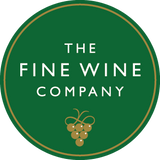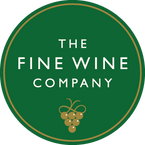Founded in the mid-18th century, this family-owned estate is one of the most historic in the Côte d’Or, with ninth generation Etienne de Montille now at its helm. Etienne inherited this responsibility from his late father, Hubert, who took over the domaine when it had shrunk from 12 to just 2.5 hectares. Previously, the family had sold off vineyards in Musigny, Bonnes Mares and Chambolle-Musigny. Hubert’s tenure lasted a staggering 50 years. While 90% of the region’s production was sold to négociants, he gained fame for his estate-bottled, long-lived and characterful wines.
Following family tradition, Etienne trained as a lawyer, but was drawn back to Volnay where he invested in rebuilding the estate. He was a savvy buyer and the domaine now boasts 37 hectares across 35 separate appellations throughout the Côte de Beaune and Côte de Nuits, making it one of the most enviable vineyard holdings in the Côte d’Or.
Highlights of early acquisitions include Puligny-Montrachet 1er Cru `Le Cailleret` in 1993, the estate’s first Chardonnay vineyard and neighbour of Montrachet Grand Cru, and Vosne-Romanée 1er Cru `Aux Malconsorts` in 2005, which neighbours the Grand Cru of La Tâche. Later purchases include Grand Cru parcels of Corton-Charlemagne, Clos de Vougeot and Corton Clos du Roi, alongside Premier Cru parcels of Puligny-Montrachet’s `Les Folatières` and Meursault’s `Les Poruzots`, which joined the de Montille roster with Etienne’s purchase of Château de Puligny-Montrachet. The Château de Puligny acquisition in 2012 was a turning point for the domaine, enabling it to become a major player in both red and white wine production throughout the Côte d’Or.
Etienne was an early advocate of organic farming when, in 1995, he introduced these principles in the estate’s vineyards. Biodynamic practices followed in 2005, and the domaine received ‘Ecocert Bio’ certification in 2012.
Winemaking at de Montille has evolved over the years. Etienne, having studied oenology and worked as Hubert’s apprentice, sought a more progressive approach to vinification than his father’s traditional methods. Gradually, Hubert allowed his son more control and Etienne’s influence on the winemaking became evident from the late 1990s.
Today, Etienne works with American-born chef de cave Brian Sieve, who has been with the domaine for over a decade. Together they make wines that are aromatic, supple and approachable in their youth, but still offer the impressive capacity for ageing for which Hubert was renowned.
There is no recipe to the winemaking here, which responds to the unique characteristics of each vintage. In the red wines, this usually translates to whole-bunch fermentation, ranging from 50% to 100%, though destemming is used when deemed preferable. Macerations last 12 – 16 days, with twice-daily punch downs and judicious use of new French oak, usually 30% or less. In the best vintages, up to 50% new oak is used for the top cuvées.
For the white wines, grapes tend to be picked early to preserve freshness. Ageing takes place in a mix of 228 and 600-litre oak barrels (with little or no bâtonnage) to add texture and complexity. As with the reds, new oak is used sparingly, usually no more than 20 – 25%. The wines are aged on lees in barrels for 11 – 12 months, then remain in tank for 5 – 6 months before bottling.



